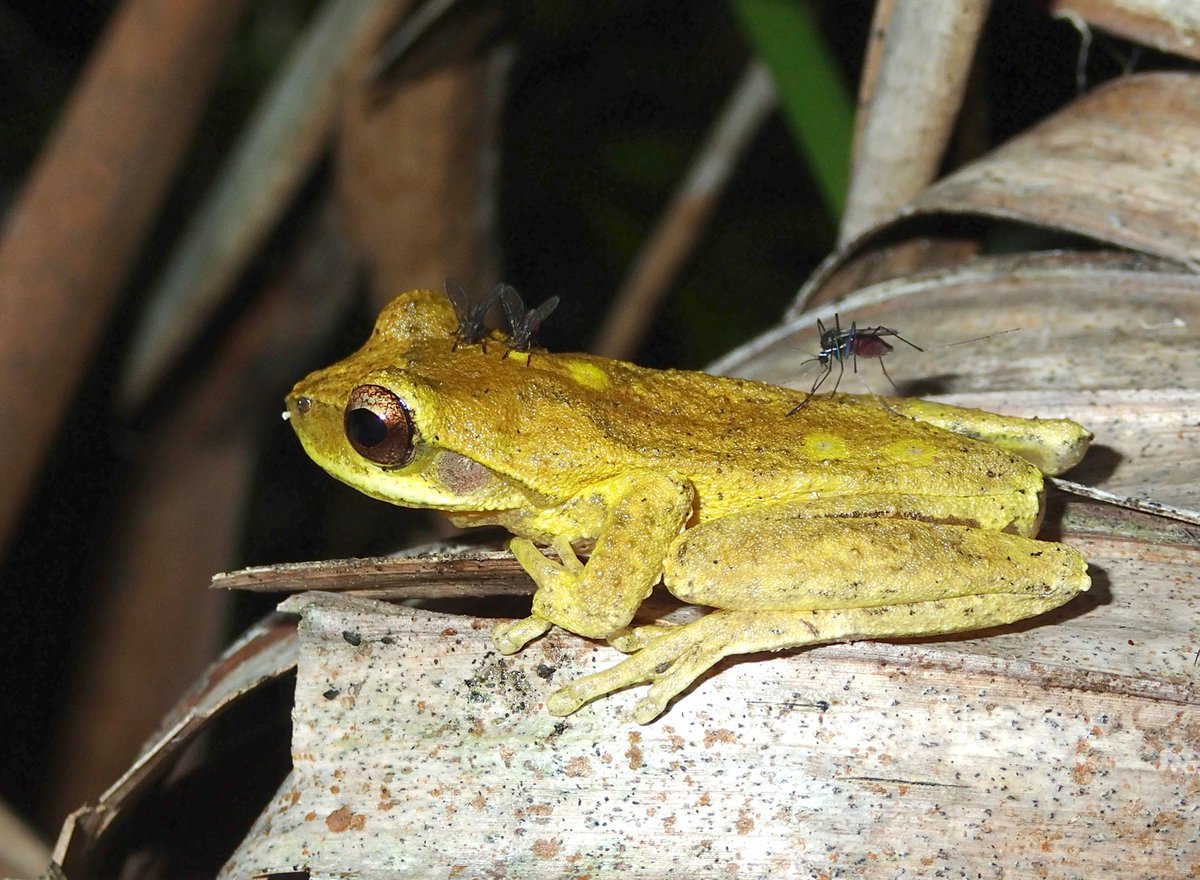Certain Australian mosquitoes may choose frog nostrils as their preferred source of blood

A mosquito species in Australia has a distinctive preference for feeding - it's the nostril of a frog. This peculiar behavior has been observed in these mosquitoes that appear to favor this body part over any other for their sanguinary meals. The study, released on November 21 in Ethology, suggests this could be due to the nostrils' thin skin, offering an effective and accessible source of blood. The discovery also hints at a new angle to analyze the spread of disease amongst amphibious populations.
Whilst studying frogs in Kooragang Island, Australia, behavioral biologist John Gould noticed this singular behavior. From 2020 to 2022, while inspecting frogs in ponds, he would occasionally see mosquitoes on the frogs' faces and snap pictures.
Gould, from the University of Newcastle in Callaghan, recalls being surprised by the repeating pattern in the pictures he collected. All the images showed mosquitoes feeding on the frog's nostril.
The species that drew Gould's attention, Mimomyia elegans, isn't unique to frogs; it also feeds on mammals and birds. Despite its omnivorous diet, the mosquito seems to show a high level of specialization when feasting on frogs.
As per Gould, the nostril's skin might be conveniently faint and delicate, giving the mosquito an easy-to-pierce surface. An alternative possibility could be a high concentration of blood vessels close to the surface of the skin in the nostril.
That these mosquitoes risk feeding on a known insect predator is a paradox, given that frogs' nostrils are just above their robust, adhesive tongues. However, as Gould observed, these insects adopt a stealthy approach, initially landing on frogs' backs and then cautiously ascending towards the head, which might help them avoid being ingested.
Previous research by Gould and his colleagues suggests that mosquitoes could contribute to spreading the deadly amphibian chytrid fungus infection. The feeding habits of mosquitoes might, therefore, help understand how this infection proliferates across a frog's skin surface.
Among the frogs captured in the pictures were the green and golden bell frogs (also known as Litoria aurea), a species presently vulnerable to extinction according to International Union for Conservation of Nature.
An experiment studying these behaviors more closely would be useful, says Manuela Carnaghi, an uninvolved party to the study and insect behavioral ecologist at the University of Greenwich. She emphasizes the importance of understanding how mosquitoes select and attack different kinds of hosts in comprehending disease transmission in animals. This is of particular significance in situations where a mosquito-transmitted pathogen or parasite is capable of switching between species.




